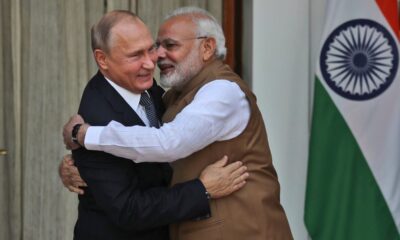Business
OPEC+ Set to Increase Oil Output Amid Market Uncertainty

OPEC+ will finish unwinding its largest production cut next month, following a decision to increase oil output by 547,000 barrels per day (bpd) in September. This outcome, anticipated by market analysts, raises questions about the future direction of OPEC+’s oil production strategy and the remaining cuts of 1.66 million bpd. The coalition of OPEC and non-OPEC producers, led by Saudi Arabia and Russia, has maintained flexibility in its production policy, leaving room for potential adjustments based on evolving market conditions.
The group convened on Sunday, confirming its plan to gradually roll back the previous 2.2 million bpd cuts. This decision coincides with an expected increase of 300,000 bpd by the United Arab Emirates by the end of September. While the immediate strategy is outlined, uncertainties linger regarding the market landscape as autumn approaches.
Demand Dynamics and Market Fundamentals
Analysts at Saxo Bank highlighted the critical question of whether oil prices can remain stable as global demand typically wanes in the fall, compounded by potential impacts from Trump’s tariffs on international trade. OPEC+ has cited “healthy oil market fundamentals and a steady global economic outlook” to support its decision to continue the rollback of production cuts, a trend initiated earlier in the spring.
Despite these reassurances, data suggests that demand in Asia, a major crude-importing region, may not be as robust as indicated. According to LSEG Oil Research, crude imports into Asia plummeted to 25 million bpd in July, down from 27.88 million bpd in June. This marks the lowest monthly import level in a year. Although China has increased its imports, analysts suggest these may be opportunistic purchases rather than indicators of sustained demand.
As the market transitions from peak summer demand, concerns about a surplus loom. Goldman Sachs forecasts that OPEC+ will likely maintain its production quotas after September, anticipating a rise in commercial stockpiles as seasonal demand decreases. The bank has set its oil price forecast for Brent crude at an average of $64 per barrel for the fourth quarter, despite recent price fluctuations.
Geopolitical Factors and Future Implications
The lack of clear direction from OPEC+ for post-September production adjustments leaves the market in suspense. The coalition has noted that the rollback of cuts could be paused or reversed depending on market conditions. Helima Croft, head of commodity strategy at RBC Capital Markets, stated, “all options remain on the table,” indicating that OPEC+ is prepared to adapt its strategy based on global developments.
The situation is further complicated by geopolitical tensions, particularly regarding Russia and its oil supply to countries like India and Turkey. The U.S. is contemplating measures to limit Russian oil exports, which could impact the dynamics of the global oil market. Analysts suggest that should these countries cease purchasing Russian oil, OPEC+ might need to reinstate some of the 1.66 million bpd cuts sooner than anticipated, potentially before the end of 2026.
The Trump Administration’s potential decision to impose substantial tariffs on India, which has been increasing its intake of Russian oil, could create additional volatility. President Trump recently criticized India’s oil trade with Russia, emphasizing the need for the U.S. to reassess its energy policies.
In summary, as OPEC+ prepares to increase production next month, the interplay of market fundamentals and geopolitical pressures will play a significant role in shaping the future of oil prices and production policies. The upcoming months will be critical in determining whether the coalition can navigate these challenges effectively while maintaining market stability.
-

 Politics4 weeks ago
Politics4 weeks agoSecwepemc First Nation Seeks Aboriginal Title Over Kamloops Area
-

 World5 months ago
World5 months agoScientists Unearth Ancient Antarctic Ice to Unlock Climate Secrets
-

 Entertainment5 months ago
Entertainment5 months agoTrump and McCormick to Announce $70 Billion Energy Investments
-

 Science5 months ago
Science5 months agoFour Astronauts Return to Earth After International Space Station Mission
-

 Lifestyle5 months ago
Lifestyle5 months agoTransLink Launches Food Truck Program to Boost Revenue in Vancouver
-

 Technology3 months ago
Technology3 months agoApple Notes Enhances Functionality with Markdown Support in macOS 26
-

 Lifestyle3 months ago
Lifestyle3 months agoManitoba’s Burger Champion Shines Again Amid Dining Innovations
-

 Top Stories2 months ago
Top Stories2 months agoUrgent Update: Fatal Crash on Highway 99 Claims Life of Pitt Meadows Man
-

 Politics4 months ago
Politics4 months agoUkrainian Tennis Star Elina Svitolina Faces Death Threats Online
-

 Sports5 months ago
Sports5 months agoSearch Underway for Missing Hunter Amid Hokkaido Bear Emergency
-

 Politics5 months ago
Politics5 months agoCarney Engages First Nations Leaders at Development Law Summit
-

 Technology5 months ago
Technology5 months agoFrosthaven Launches Early Access on July 31, 2025




















